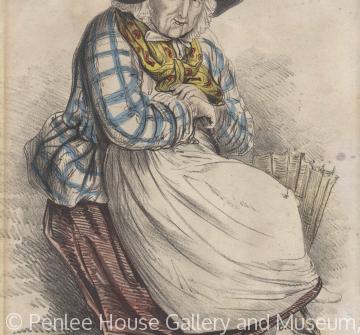Fish women

Newlyn and Mousehole were renowned as centres of the Cornish fishing trade. Fishing was the major employer here in the 17th and 18th centuries. So what role did the women play?
Many drift fisheries were family businesses with families or neighbours having shares in boats and nets. Wives and girlfriends were a key part of the fishing economy as they could increase a man's earning power by making nets for him.
Also casual shore workers were required for the harvest of the sea. Women carried pilchards up from the beach on their backs in a 'cawell' (cowel or carrying basket). Inventories of women's properties sometimes list cawells. Women also worked in pairs to built bulks (walls of fish) with a thick salt mortar in fish cellars.
We know of some self-employed female fish curers such as Elizabeth Noye of Mousehole ( a Keigwin) whose 1677 inventory included 16 bucklers, 14 pressing poles and 21 pressing stones. Lydia Tonkin was her Newlyn equivalent in the late 1690s-1700s. There was also a large number of women employed to work in the fish cellars from Newlyn and Mousehole fishing families.
Content generated during research for the paperback book 'Cornwall and the Coast: mousehole and Newlyn' (ISBN 13 : 978-1-86077-489-8) for the England's Past for Everyone series



